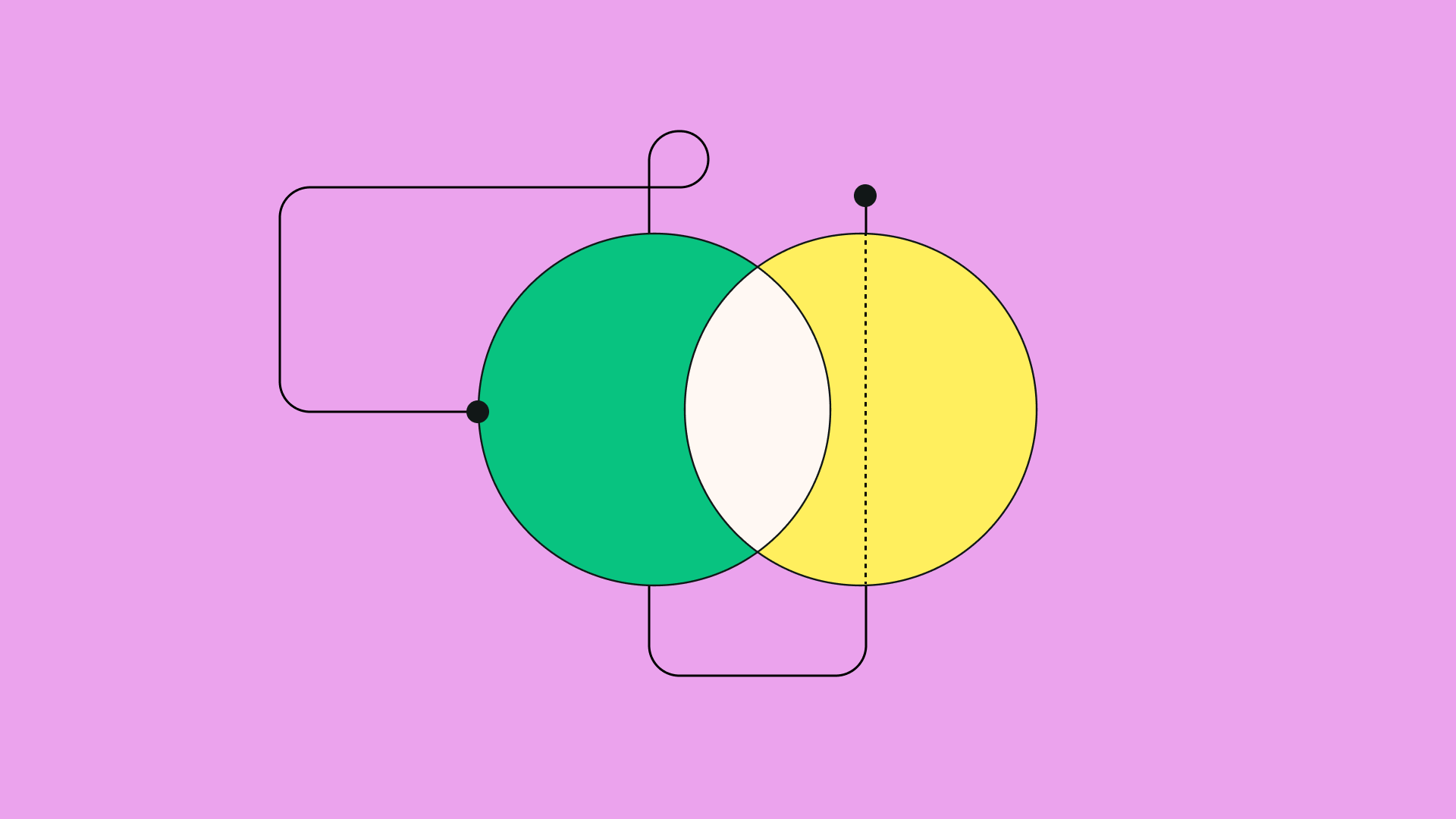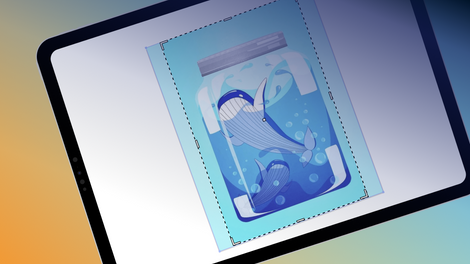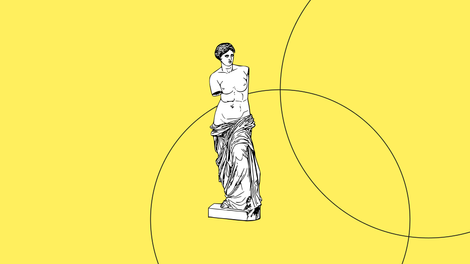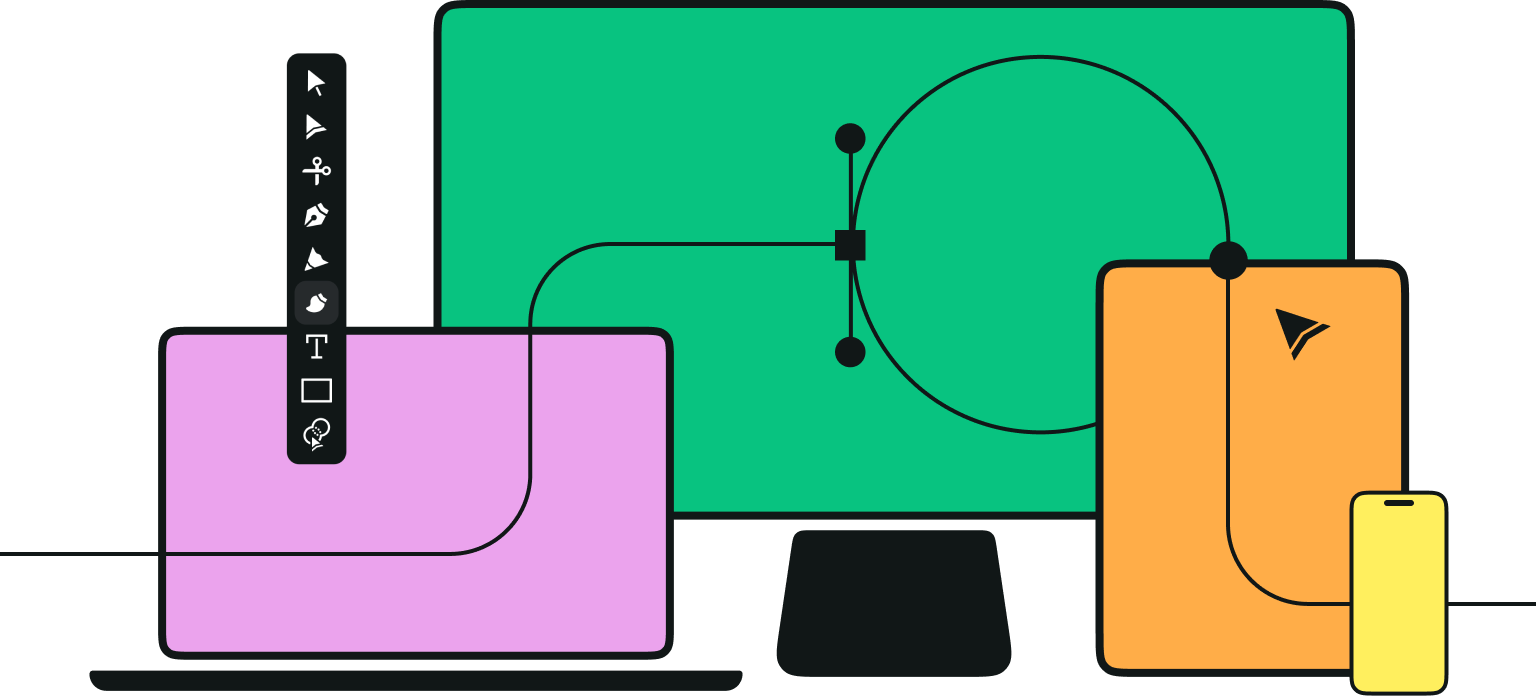Are logos simply aesthetic embellishments or pivotal factors in brand recognition? This debate needs to be more noticed, with logos often undervalued in corporate branding strategies' grand scheme.
A great deal of skepticism surrounds the assertion that a symbol can influence a consumer's perception of a brand. However, this article dives into captivating statistics, highlighting the persuasive force these symbolic designs can hold.
As we look at these compelling figures, your perspective on logos may change. Logos, in their deceptive simplicity, are silent powerhouses that subtly craft a brand's identity in the minds of consumers.
Key trends in digital advertising
* Logos facilitate Brand recognition more quickly due to the human brain's ability to process visuals 60,000 times quicker than text.
* 80% of well-designed logos have the potential to become iconic symbols that transcend time, allowing brands to maintain relevance and resonance with consumers across generations.
* A professionally designed logo gives the impression that the brand invests in its presentation, which can positively influence consumer confidence by 75%.
* As of 2023, the most popular file format for logo distribution was PNG, used by 83% of brands.
* In the past five years, 78% of major brands have undertaken logo redesigns to refresh their image and stay relevant in the market.
What this means: Logos play a pivotal role in brand success, offering quick recognition as the brain processes visuals faster than text. The real insight is that investing in a well-thought-out and professionally designed logo is worth the expense for companies that want to capture and keep consumers' attention for many decades.
The role of logos in branding statistics
Is the significance of a logo merely limited to a pretty adornment, or does it extend to the heart of a business's brand identity? The importance of logo design is often downplayed, underestimating its influence on customer perception and loyalty.
These insightful statistics illuminate logos' transformative power in shaping a brand's narrative, instilling trust, and making a lasting impression.
But what makes an effective logo? Is it simplicity, versatility, relevance, or a combination of all of these? Let’s examine these aspects and unravel the elusive alchemy behind successful logo design.
- A brand with a simple logo design is more likely to be recommended by 64% of consumers.2
- Brand recognition is facilitated more quickly by logos due to the human brain's ability to process visuals 60,000 times quicker than text by our brains.4
- An aesthetically appealing logo can boost brand loyalty, with 39% of consumers stating they would buy from a brand they recognize and trust.^1^
- Studies have found that consistent branding through logos and other visual elements can increase revenue by up to 23%.5
- Logos are crucial in creating brand identity, providing a recognizable and memorable symbol that 78% of consumers associate with a specific company or product.3
- Companies with solid logos tend to enjoy a competitive advantage, as consumers are 88% likelier to choose a brand they are familiar with over unfamiliar alternatives.5
- Brand recognition achieved through logos can lead to a 30% higher customer retention rate, as familiar brands are perceived as more trustworthy and dependable.4
- 60% of compelling logos can convey a sense of professionalism and credibility, encouraging potential customers to view the brand as reliable and authoritative.2
This consistency in branding can boost revenue by up to 23% and result in a 30% higher retention rate. Thus, a well-crafted logo, serving as a potent symbol of credibility, is pivotal in building brand identity, fostering trust, and driving business growth.
9. Logos enable 55% of businesses to create a consistent visual identity across various marketing channels, such as websites, social media, packaging, and advertisements.4
10. 90% of people are more likely to remember information when presented with a visual aid, making logos crucial for brand recall.14
11. 80% of well-designed logos have the potential to become iconic symbols that transcend times, allowing brands to maintain relevance and resonance with consumers across generations.4
12. Logos serve as a visual shorthand for 66% of a brand's values and offerings, simplifying complex messages into a single image that consumers can quickly comprehend.4
The versatility of a logo design is vital in ensuring it can adapt to different mediums, sizes, and color schemes without losing its essence. - ColorCom
13. Using simple shapes and colors in logo design can evoke specific emotions and associations, influencing 78% of consumer perceptions of the brand.6
14. By communicating what sets it apart, logos can help differentiate a brand from its competitors by 58%, especially in crowded markets.6
15. A well-designed logo can positively impact a brand's reputation by 78%, decreasing customer trust and declining market share.6
16. An effective logo can convey a brand's story and heritage, fostering a sense of nostalgia and emotional connection among 65% of consumers.8
17. Logos can communicate a brand's commitment to quality and excellence, influencing over 75% of consumers to perceive their products or services as superior.8
18. Logos are critical to 86% of brand consistency, ensuring all marketing efforts align with the brand's image and messaging.8
19. Using relevant symbols and imagery in logo design can help increase customers understanding by 45% of the brand's industry or offerings.5
20. A professionally designed logo gives the impression that the brand invests in its presentation, which can positively influence consumer confidence by 75%.5
21. Logos can foster a sense of community among 80% of loyal customers, as they become brand advocates and wear the logo to symbolize their affiliation.8
22. A strong logo can attract top talent to a company, as 50% of potential employees may perceive the brand as a desirable and successful organization to work for.2
23. Logos can transcend language barriers by 32%, allowing global brands to communicate their identity and values across different cultures and regions.2
24. The strategic use of negative space in logo design can improve depth and clever symbolism by 60%, making the logo more engaging and memorable for customers.1
The critical role of logos in branding, as supported by these persuasive statistics, undeniably provides significant insights for marketers and designers. The profound influence these design elements have on brand recognition and loyalty is truly captivating.
Logo design trend statistics
Do the evolving trends in logo design truly impact brand recognition, or are they just fleeting aesthetics that soon fade from public consciousness? A significant section of the design industry grapples with this debate, underscoring the contentious nature of tracking and adopting logo design trends.
This section is dedicated to showing current and emerging trends in logo design, enriched by statistical data highlighting the popularity of specific design styles and color choices.
- 93% of first impressions of a brand are based on its logo design.7
- Minimalistic logo designs have seen a 33% increase in popularity over the last five years.7
- 45% of all logos utilize one color, with black being the most common.7
- Symmetrical logo designs are 2.7 times more likely to be remembered than asymmetrical ones.6
- Over 60% of well-known brands use a simple, text-only logo.6
- Logos with hidden meanings or subtle elements have increased by 25% in the last decade.6
- Geometric shapes are present in 72% of the top 100 global brand logos.1
- The use of negative space in logos has risen by 38% since 2015.7
The statistics reveal a balance between simplicity, evidenced by 60% of well-known brands opting for text-only logos, and creativity, seen in the 25% increase in logos with hidden elements.
Prevalent geometric shapes and increased use of negative space highlight evolving design trends. Thus, impactful logos harmoniously blend simplicity, memorability, and subtlety.
9. Flat logo designs have experienced a 20% decreased in popularity since 2018.7
10. Dynamic logos that change with context have gained traction, increasing by 15% in recent years.7
11. Serif fonts are used in 28% of logo designs, with a decline in popularity among tech companies.7
12. Logos with gradient effects have increased by 10% since 2019.7
13. Animated logos are growing in popularity, with a 45% increase in website use and social media.7
14. 68% of consumers consider logo color when purchasing.7
15. Blue remains the most popular logo color choice, with 41% of brands using it.6
16. Eco-friendly brands prefer using the color green in their logos (27% usage).6
17. Red is the color most associated with energy and excitement, used by 18% of brands.6
18. Brands often employ yellow and orange colors to convey optimism (15% usage).6
19. Purple is the least commonly used color, appearing in only 8% of logos.6
20. Over 80% of consumers believe inconsistent branding can harm a company's credibility.7
21. Monograms and letter marks account for 22% of all logo designs.7
22. Logo redesigns can lead to a 10% increase in brand recognition.7
23. Companies with a text and symbol-based logo have a 13% higher brand recall than text-only logos.7
24. As of 2022, 55% of brands have optimized their logos for mobile responsiveness.7
25. Brands that adopt responsive logos have experienced a 15% increase in user engagement.7
26. In 2022, 78% of businesses had a vector-based logo for scalability and versatility.7
27. Logo design contests have grown in popularity, with a 25% increase in platform usage.7
28. In 2022, the average cost of a professional logo design ranged from $500 to $5,000.7
29. 88% of businesses prioritize logo design as a branding strategy.8
30. As of 2023, the most popular file format for logo distribution was PNG, used by 83% of brands.7
The exploration of logo design trends, illustrated through these statistics, offers a riveting narrative for marketers and designers. A delicate balance of simplicity, memorability, and creative subtlety is fundamental in creating logos that resonate with audiences.
As we move to our next section, these insights become the lens through which we examine the nuanced world of logo redesign and its subsequent influence on consumer perception.
Logo redesign and consumer perception statistics
When significant brands redesign their logos, it often carries intriguing implications and sparks lively debates within the marketing and design industries. With this in mind, this section aims to probe into the compelling statistics surrounding these redesigns.
We’ll present insights from various surveys, shedding light on consumer perceptions of different logotypes. The discussion addresses the underlying reasons for logo redesigns and their ripple effects on brand perception and consumer purchasing behavior.
- In the past five years, 78% of major brands have undertaken logo redesigns to refresh their image and stay relevant in the market.10
- 85% of logo redesigns are motivated by the desire to modernize the brand's identity and align it with current design trends.11
- The average frequency of logo redesigns among major brands is once every seven years.11
- On average, companies that underwent a logo redesign experienced a 15% increase in brand awareness within the first six months after the launch.10
- 72% of consumers believe a logo redesign reflects a brand's commitment to innovation and continuous improvement.11
- Among brands that conducted a logo redesign, 63% reported increased customer loyalty and retention.11
- 42% of consumers perceive a brand with a modernized logo as more trustworthy than the previous version.11
- After implementing a logo redesign, 79% of significant brands witnessed a boost in their social media engagement.10
This supports that 72% of consumers believe a redesign symbolizes a brand's commitment to innovation. The enhanced trust and social media engagement, along with a pattern of redesign every seven years, illustrates the impact of a modern, refreshed logo on consumer perception and brand success.
9. Logos featuring clean and simple designs are preferred by 67% of consumers.1
10. Brands that shifted from intricate logos to simplified ones experienced a 21% increase in positive brand perception.11
11. Consumers aged 18–34 are 37% more likely to appreciate bold and dynamic logo redesigns.1
12. Companies that successfully redesigned their logos observed an average revenue growth of 11% in the year following the launch.11
13. 91% of consumers believe that a logo redesign should maintain some connection to the brand's previous identity.11
14. 53% of major brands that changed their logos faced initial backlash from a segment of their loyal customers.1
15. 75% of consumers associate logo redesigns with attracting a younger audience.11
16. 87% of companies that introduced a more versatile logo design reported a positive impact on their product packaging and merchandising.11
17. 61% of consumers, especially those aged over 50, favored logos incorporating nostalgia elements.1
18. 94% of consumers believe a well-executed logo redesign can positively influence their perception of the brand's products or services.2
19. 46% of consumers consider color the most important aspect of a logo redesign.4
20. Brands that updated their color schemes in a logo redesign reported a 20% increase in brand recognition.4
21. 83% of consumers believe that a logo redesign should reflect the core values and mission of the brand.8
22. 57% of consumers feel more compelled to purchase from a brand that recently redesigned its logo.2
23. 88% of consumers think a logo redesign can bring new life into a brand.2
24. Logos that effectively convey a brand's personality are preferred by 72% of consumers.2
25. Among consumers who noticed a logo redesign, 62% expressed interest in learning more about the brand's products or services.4
26. 80% of consumers believe a clear explanation of the reasons behind the change should accompany a logo redesign.2
27. Brands that invested in extensive marketing and promotion of their logo redesigns saw a 30% increase in website traffic.8
28. Logos that incorporate hidden meanings or symbols were found to be more memorable by 49% of consumers.4
29. After noticing a well-executed logo redesign, 69% of consumers will likely recommend a brand to others.2
Ultimately, logo redesigns are pivotal milestones in a brand's journey, shaping consumer perception and loyalty while driving brand awareness and digital engagement. This search has demonstrated the significance of well-executed logo redesigns, an insight that may inform future design strategies.
As we move forward, the conversation turns to a related and equally fascinating topic—the role of color in logos. Join us as we continue the journey into the statistics linking color choices in logo design to business success.
The influence of color in logos and business success statistics
The often overlooked yet crucial element of color in logo design forms the focus of our discussion in this section. A venture into how color choice influences consumer perception and business success is grounded in extensive statistical analysis.
The intricate dance of color psychology, logo design, and their consequent impact on business success will be dissected
- Companies with well-designed logos are estimated to experience revenue growth of up to 33%.9
- A well-designed logo is reportedly more likely to inspire brand loyalty by 48% of consumers.17
- Businesses that effectively use their logos on social media platforms witness a 13% increase in brand awareness.12
- Logos featuring both text and an image are 6% more memorable than those with text alone.13
- Brands with consistent logos across all marketing materials achieve a 23% increase in revenue.14
- 75% of consumers judge a brand's credibility based on its logo design.14
- Logo redesigns have been associated with a 13% increase in consumer engagement.14
- Companies with a robust logo design are 27% more likely to attract new talent.12
They enhance memorability and credibility, with most consumers evaluating a brand by its logo design. Attracting new talent is also influenced by robust logo design, reinforcing the logo's far-reaching implications for a business.
9. The average attention span of consumers when viewing a logo is about 5 seconds.12
10. A unique logo can increase brand visibility by 80%.15
11. Brands with recognizable logos are 58% more likely to perform well in the stock market.15
12. 94% of first impressions about a brand are logo-related.15
13. A professional logo design can increase a company's perceived value by up to 14%.15
14. 39% of consumers will only do business with a company if they find their logo appealing.15
15. Logos that use color effectively can increase brand recognition by 80%.15
16. 67% of small businesses will pay more for a professionally designed logo.15
17. Logos effectively conveying a brand's personality are 27% more likely to resonate with consumers.15
18. Businesses with a consistent logo across all channels experience a 23% increase in customer loyalty.15
19. 59% of consumers globally prefer to buy products from familiar brands.15
20. 72% of businesses believe logo design significantly impacts customer loyalty.12
21. Logos designed using golden ratio principles are perceived as more visually appealing by 68% of consumers.12
22. Over 40% of consumers share a memorable logo on social media.12
23. A well-designed logo can lead to a 29% decrease in brand trust.12
24. If the logo and layout are unattractive, a website will be abandoned by 38% of consumers.12
25. 76% of consumers said they would avoid a brand if their logo were offensive or poorly designed.12
26. Over 50% of consumers believe logos can communicate a brand's message more effectively than words.12
27. A confusing logo design can cause a 29% decline in brand recognition.12
28. A brand with a transparent logo design is likelier to be trusted by 51% of consumers.12
29. Logos featuring modern design elements can boost brand perception by 32%.12
30. A well-designed logo can lead to a 21% decrease in customer referrals.12
A vital tool for revenue growth, brand awareness, and talent attraction, the nuances of logo design should be noticed. As we step into the future trends in logo design in our next section, we’ll further emphasize the importance of integrating these insights to help shape a brand narrative that resonates in the dynamic marketplace.
Future trends in logo design
Marketers and designers need to understand the evolving trends in logo design. With data-driven insights and market projections, emerging patterns can serve as a compass, guiding branding strategies to align with consumer expectations and technological advancements.
This section will explore what lies ahead in this vital aspect of branding. Engaging with these trends, one is invited to adapt, innovate, and strategize for success in the increasingly dynamic world of branding.
- Minimalistic designs have been trending in logo design for years, and it's expected to continue. By 2025, 70% of new logos will follow minimalistic principles.18
- With technological advancements, logos that can adapt to different mediums and platforms will gain traction. By 2024, 50% of businesses will opt for dynamic logos.16
- As companies aim to connect with their audience on a deeper level, personalized logos might become more prevalent. By 2026, 40% of companies will have logos tailored to individual customer preferences.16
- Animated logos create engaging experiences, primarily online. By 2025, 60% of businesses will incorporate animation in their logos.18
- With the growing importance of audio branding, logo soundscapes will likely gain popularity. By 2024, 20% of logos will have accompanying sound designs.16
- AR technology presents new opportunities for logo interactions. By 2025, 30% of businesses will have AR-enabled logos for customer engagement.16
- Companies may incorporate sustainability themes into their logos as environmental concerns increase. By 2026, 25% of new stamps will reflect eco-friendly values.18
- Optimizing logos for social media profiles and sharing will become critical for brand visibility. By 2024, 80% of new logos will be designed with social media in mind.18
Personalized and animated logos, set to be adopted by 40% and 60% of businesses by 2026 and 2025, underline the shift towards more engaging, customer-centric experiences. Audio branding and AR technology also play emerging roles, while 25% of new logos by 2026 will reflect rising environmental concerns.
With 80% of new logos predicted to be social-media optimized by 2024, these statistics collectively suggest a future where logo design is shaped by technology, user experience, and societal values.
9. With the rise of voice searches, logos that translate well to voice assistants will be in demand. By 2026, 35% of logos will be designed with voice search compatibility.16
10. Geometric logos offer versatility and simplicity, making them popular. By 2025, 65% of logos will incorporate geometric elements.18
11. Companies may utilize crowdsourcing platforms for logo design, tapping into global talent. By 2024, 40% of logos will be crowdsourced.16
12. Utilizing consumer data to create logos that resonate with target audiences will become more common. By 2026, 50% of logos will be influenced by data analytics.16
13. Brands may reintroduce vintage logos to evoke nostalgia and strengthen brand loyalty. By 2025, 30% of logos will be modernized versions of classic designs.18
14. As businesses expand globally, logos that transcend language barriers will be favored. By 2024, 25% of logos will incorporate multilingual elements.16
15. Brands have incorporated emojis into their logos as an integral part of online communication. By 2026, 15% of logos will include emojis.16
16. AI tools for logo design will become more sophisticated, impacting the creative process. By 2025, 20% of logos will be generated using AI algorithms.16
17. As VR becomes more mainstream, logos may be designed for immersive experiences. By 2024, 10% of logos will have specific VR adaptations.16
18. Brands will use logos to convey compelling narratives about their values and missions. By 2026, 55% of logos will have story elements.16
19. Logos that invite user interaction will gain popularity, fostering a deeper connection with customers. By 2025, 45% of logos will have interactive components.16
20. With the increasing adoption of dark mode in digital interfaces, logos with dark versions will be more sought after. By 2024, 30% of logos will have optimized dark mode variations.16
21. Advancements in holographic technology may lead to holographic logo displays. By 2026, 5% of logos will be designed for holographic representation.16
22. With the wearable tech market expanding, logos suitable for wearables will be in demand. By 2025, 25% of logos will be optimized for wearable devices.18
23. Brands may frequently refresh their logos to stay relevant in rapidly changing markets. By 2024, 50% of established brands will undergo logo redesigns every five years.18
24. As AI creates more content, logos might be designed to suit AI-generated materials. By 2026, 15% of logos will be tailored for AI-generated content.16
25. Brands might create interactive games using their logos to boost engagement. By 2025, 20% of logos will be gamified.16
26. Influencers may collaborate with designers to create logos that resonate with their followers. By 2024, 10% of logos will be co-designed by influencers.18
27. Companies may use biometric elements in their logos for enhanced security and personalization. By 2026, 5% of logos will integrate biometric features.16
28. Logos that adapt their colors based on context and platform will become prevalent. By 2024, 40% of logos will feature adaptive color palettes.16
29. Brands might dynamically update logos to reflect real-time data or events. By 2026, 10% of logos will have real-time updating capabilities.18
It's not the sheer number of logos that will dominate the market but the stories they carry and the emotions they invoke in consumers. From multinational corporations to budding startups, it's evident that a well-crafted logo is more than just a symbol𑁋it's a silent brand ambassador.
Frequently asked questions
- What key elements must designers consider when designing a logo?
Logos typically look at a variety of elements, including:
- color usage (monochrome or multicolor),
- style (minimalist, vintage, illustrative, etc.),
- typeface choice (sans-serif, serif, script, etc.),
- logo shape, and the use of abstract versus literal imagery.
These elements are all factors that can significantly influence how a logo is perceived.
2. Are there any specific trends for logo design in different industries?
Yes, there are often observable trends in logo design within specific industries. For example, tech companies may favor minimalist and modern designs, while food and beverage companies may lean toward warm, appetizing colors.
3. How often do companies change their logos?
The frequency with which companies update their logos varies greatly. Some companies tweak their logo every few years to keep up with design trends. In contrast, others maintain the same logo for decades to reinforce brand recognition, such as Nestlé, Mitsubishi, and Coca-Cola. On average, companies often consider a logo redesign every 5 to 10 years.
4. Can logos predict the success of a brand?
A logo is just one element of a brand, and many other factors, such as product quality, customer service, marketing efforts, and market conditions, also play crucial roles. However, a well-designed logo based on statistical trends can significantly boost brand recognition and positive perception.
5. Can a logo's shape influence customer perception?
Absolutely. The shape of a logo can carry symbolic meaning and evoke specific emotions. For instance, circular logos can suggest community, unity, and completeness, while angular shapes often signify strength and efficiency. Understanding these subconscious associations can help design a logo that aligns with a brand's message.
Jumpstart
your ideas with
Linearity Curve
Take your designs to the next level.
Sources
- SurveyMonkey
- Website Planet
- Business Wire
- IFVP
- DesignBuddy
- ColorCom
- DesignCrowd
- MarketSplash
- Forbes
- Ranker
- StudyFinds
- Hootsuite
- The University of Iowa
- Stanford Graduate School of Business
- The Logo Company
- Visua
- Adobe
- Wix
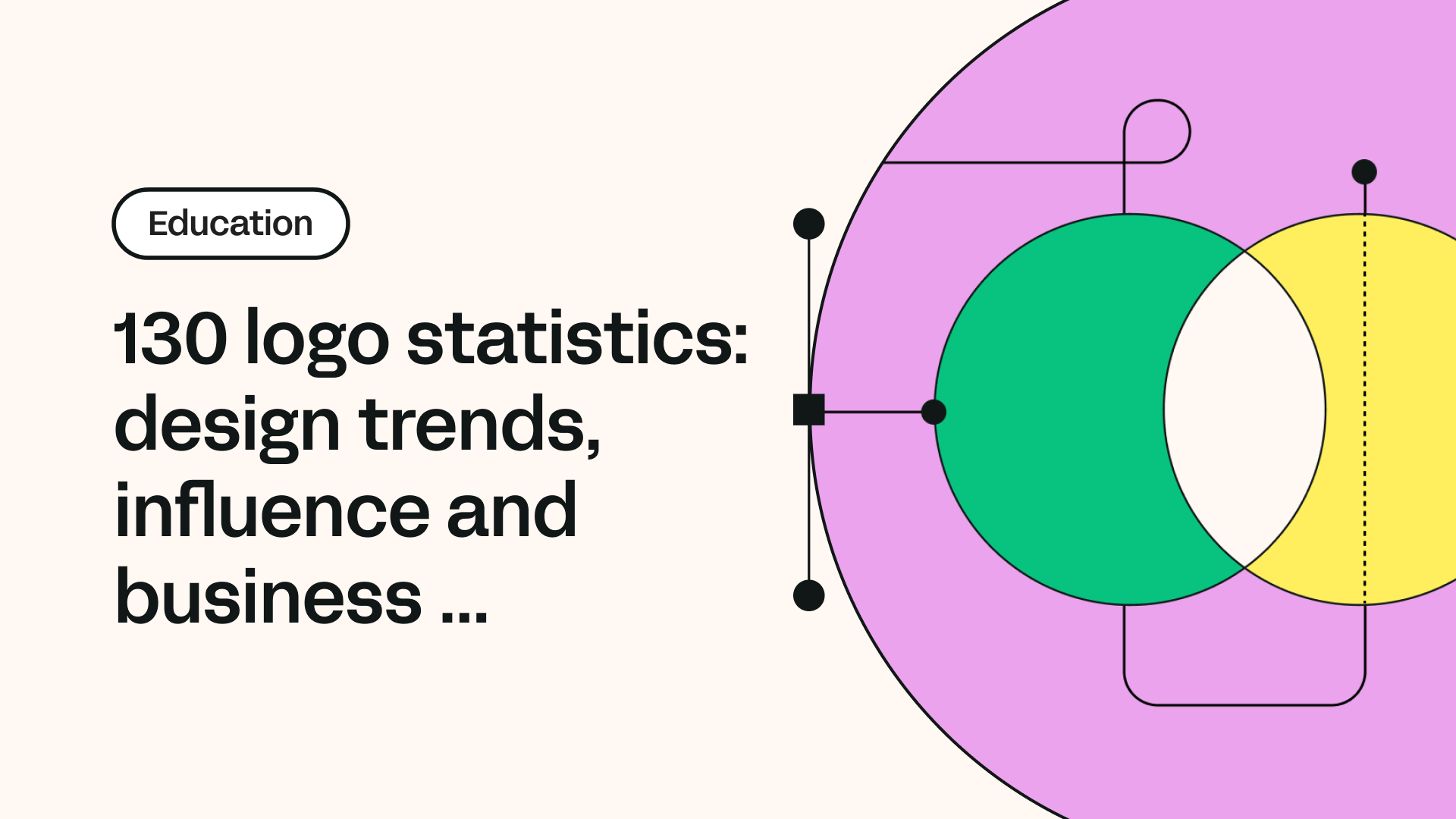
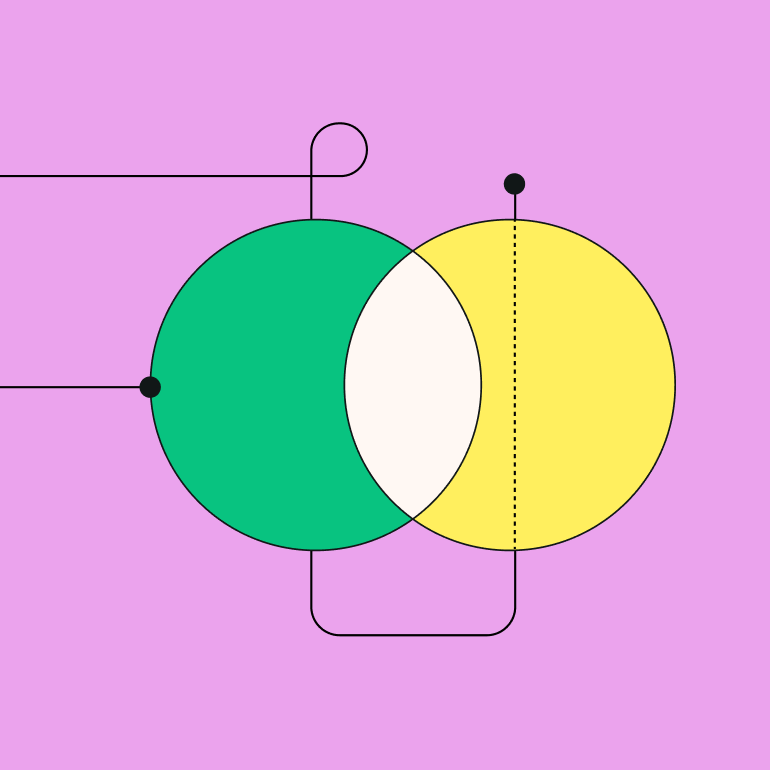
Share this!


:quality(75))
:quality(75))
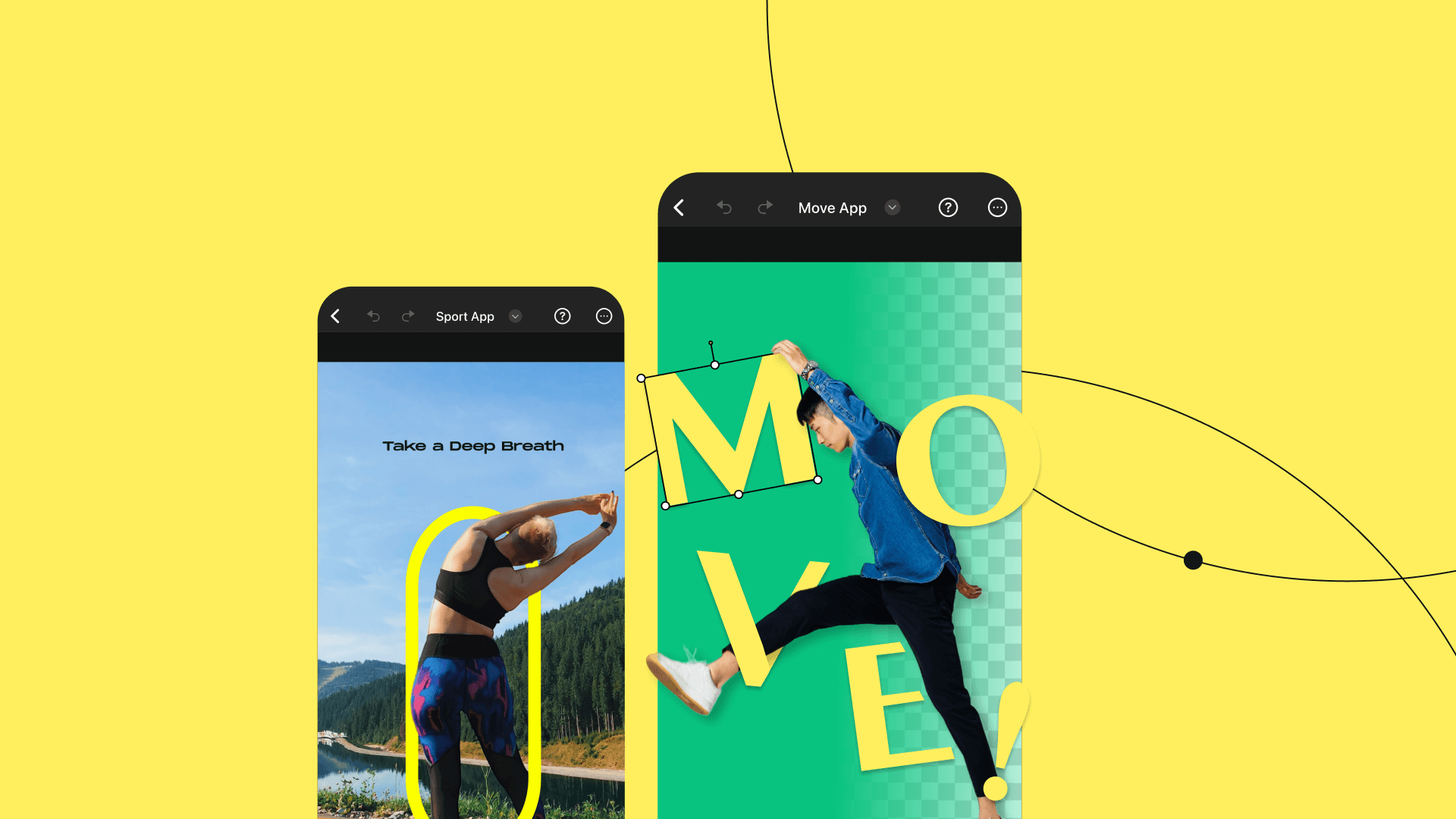
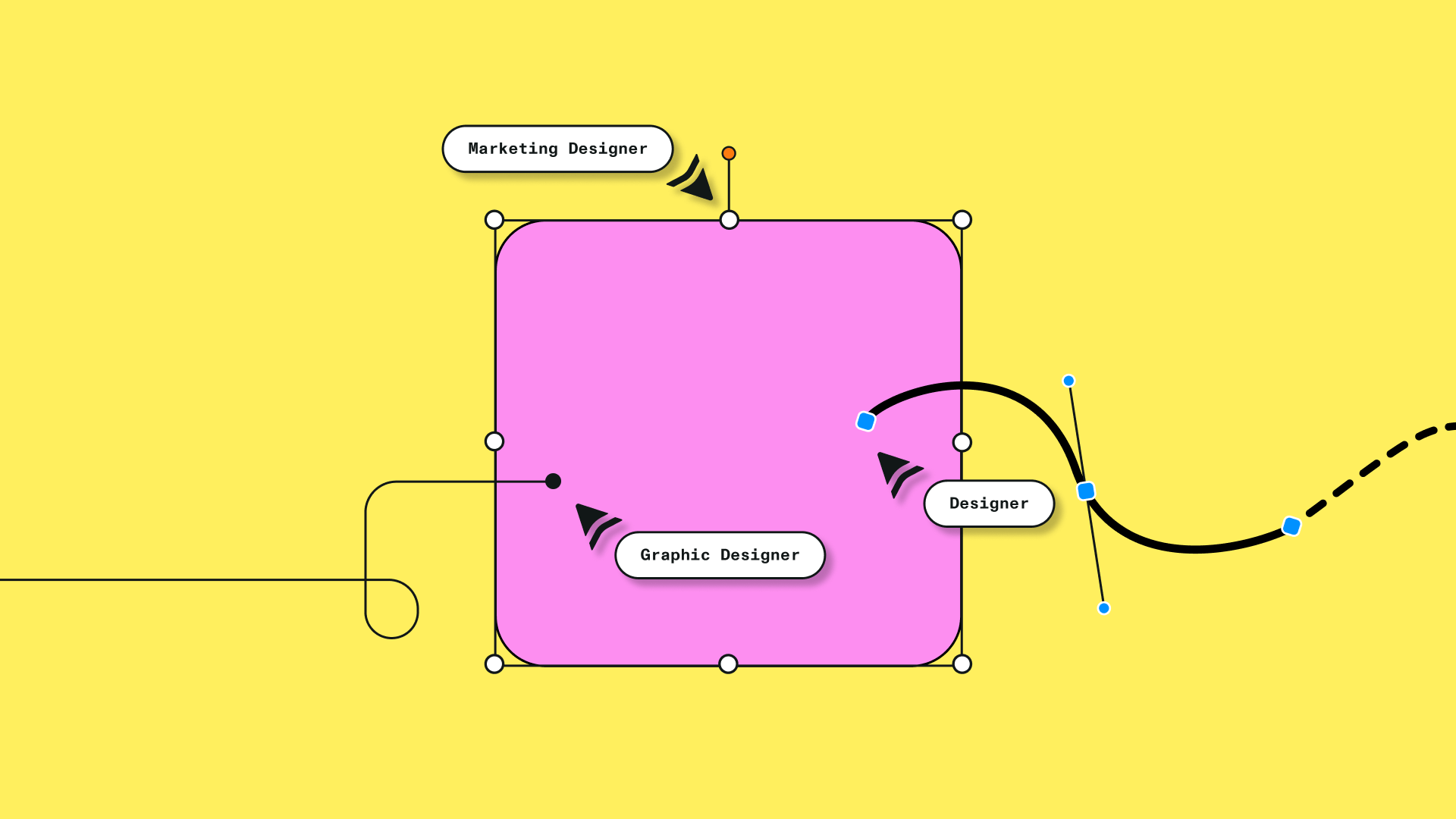

:quality(75))
